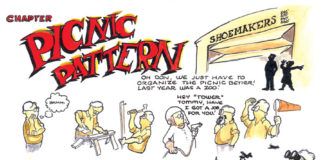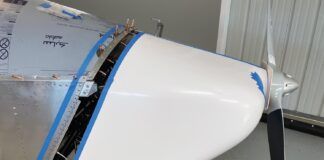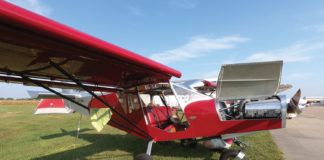Question: Do I have to run my engine for the DAR?
Answer: This will depend on your particular DAR. Many require a run at inspection time; others don’t. I would say offhand that most do. Your engine should have at least 1 hour run time before the inspection. If you have a factory-built engine, they should have run the engine in a test cell and provided you with a run sheet. They typically will have run the engine for more than an hour. The run sheet should show oil temperature and pressure, rpm drop for left and right ignition systems, cylinder head temperatures, full-power rpm and run time.
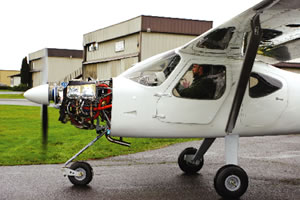
In many cases, a builder will purchase a used engine and overhaul it. Because Experimental aircraft are not required to have a certified engine, the builder, or anyone else, may perform the overhaul. This is really not the best scenario. Now you have an untested engine on an untested airframe, each of which needs totally different initial operation. The engine should be run hard for the first few hours for break-in, whereas the airframe needs to be operated over a wide range of speeds, most of which are on the lower end. Which are you going to do? My recommendation is if you have a used engine that runs OK, install it and test the aircraft. After the aircraft is proven, then overhaul the engine. This is exactly what I did with my RV. I bought a high-time (2500 hours) O-320 that had a good run sheet and flew behind it for almost 300 hours before I overhauled it.
If you have overhauled your engine and it has not been run in, you should at least run it enough to verify that oil pressure is correct, all engine controls operate as designed, all engine instruments work properly, and there are no leaks or anomalies. If you have a controllable propeller, that needs to be tested as well. Obviously a newly overhauled engine should not be run excessively on the ground unless you have access to a proper test cell. Airplane cowlings are designed for in-flight cooling and are not optimized for ground operation.
Now back to the original question of Do I have to? My inspection checklist contains the following:
- Check proper operation of engine controls-throttle, mixture, carb heat/alt air, and prop governor.
- Check brakes for adequacy at high power setting.
- Check engine instrument operation.
- Check carb heat/alt air for proper operation.
- Check static rpm.
- Check ignition drop for individual ignition systems.
- Check oil pressure for normal range.
If I feel good about the overall inspection before we get to the part where we must run the engine to check the next item off the list, I may not ask for an engine run. If you have an unusual engine installation, an auto engine conversion or anything not recommended by the aircraft designer, then Im probably going to ask you to run the engine.
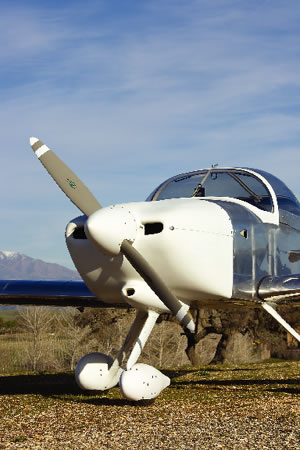
Question: I have acquired a Lycoming O-320-E2A engine for my Vans RV-9A project. The engine came off of a flying Piper that was storm damaged. I have all the logs and AD compliances, etc. Would this be considered a certified engine? If so, and if I mated it with a Sensenich prop from Vans, which the company says is certified, would this prop and my engine qualify the plane for a 25-hour Phase I test period?
Answer: As long as the engine has been maintained according to its type certificate and you don’t make any changes such as aftermarket electronic ignition and/or fuel injection, your engine should be considered as certified. If you use the certified Sensenich prop, you should get a 25-hour test period.
You need to talk with whatever inspector you plan to use, as the inspector can give you more than 25 hours if he is not comfortable with your installation-the shorter test period, even with a certified engine, is not a given.
Question: You state that the reason a homebuilt aircraft cannot be used for flight training is that the aircrafts operating limitations state the aircraft cannot be used to carry persons or property for compensation or hire.
But the FARs state (preamble to P-135) that there are several activities that are not to be construed as carrying persons or property for compensation or hire. Real close to the top of the list of those exempted activities is dual flight instruction.Im not saying that homebuilts can be used for dual without a specific exemption, just that this carrying persons or property for compensation for hire reason is not correct. Care to comment?
Answer: I forwarded your comments to FAA, AFS 640 in Oklahoma City. This is the Designee Standardization Branch that provides us DARs with guidance each year. Here is the response:
If the instructor provides the aircraft and charges me for the airplane AND his instruction, that could be construed as compensation or hire, and we can not use an amateur-built airplane for this purpose. That is why the 141 flight schools are using TCd aircraft for instruction, rather than Experimental aircraft. No Experimental aircraft can be used for flight instruction, where the student is paying for the instructor and the airplane. The reference to P-135 makes no sense to me, with respect to a preamble or amendment to a regulation. Normally an amendment to a regulation, which is often referred to as a preamble, is the regulation number followed by the amendment number, such as Amendment 21-20. This is the 21st amendment to Part 21. P-135 does not correlate to a regulation and would be impossible to find with only that number. A preamble to Part 91 would seem to me as the appropriate regulation that may contain information regarding this subject. The preamble to a regulation is the explanation of the regulation published in the Federal Register at the time the regulation becomes final. This is actually the Amendment to the regulation and explains the FAA writers views of the subject matter and why they came to the conclusions they did. This conclusion is based on comments received from industry and persons affected by the regulation that were received when the Notice of Purposed Rulemaking (NPRM) was released.
In addition, the first statement of the operating limitations for amateur-built aircraft states that: No person may operate this aircraft for other than the purpose of meeting the requirements of part 91.319(b) during Phase I flight testing, and for recreation and education after meeting these requirements as stated in the program letter (required by 14 CFR, part 21.193) for this aircraft.
Please send your questions for DAR Asberry to [email protected] with Ask the DAR in the subject line.










